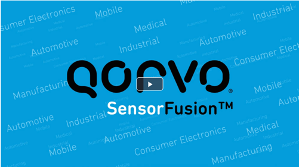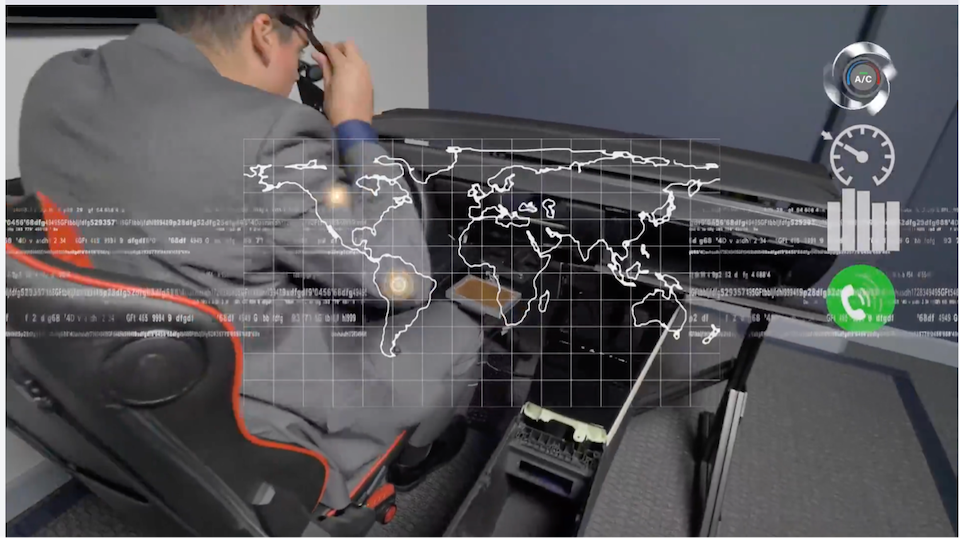Beyond Buttons: Force Sensing Solutions Pave the Way for Automotive Evolution
February 15, 2024
It’s a momentous era for automobiles, marked by a convergence of technological innovations that forever transform the landscape of the vehicles we encounter on the roads today. Over the past fifteen years, a wave of groundbreaking advancements has reshaped modern vehicles, catapulting them into a realm of convenience, connectivity and safety. Not only have vehicles instituted many safety features attributing to lowering fatalities: in the United States, the estimated fatality rate decreased to 1.35 deaths per 100 million vehicle miles traveled (VMT) in 2022, down from 1.37 deaths per 100 million VMT in 2021. Moreover, the vehicle has become more convenient with easy-to-use wireless connectivity features and easy touch sensor technology for touch screens, steering wheel sensor buttons and more.
Revamping the Automotive In-Cabin Experience
Car interiors have evolved dramatically since the 1980s and 1990s. At one point in history, the only electronic device in a car was a radio. The introduction of various electronic features—electronic door locks, power windows, heated seats, cruise control, and the like—marked a significant shift. Fast forward to the present, where Bluetooth® pairing, mapping software, and expansive touch displays with full Internet connectivity have surpassed our capacity to navigate information while staying focused on the road effectively. The automotive industry faces the challenge of reconsidering its user interfaces to meet consumers' escalating demands for content and functionality while aiming for a blend of aesthetics and safety.
Transforming Touch with Qorvo SensorFusion™

Qorvo's sensors transform touch and elevate your end user's experience. Our technology works with a multitude of inputs, is immune to most environmental factors and works with any material.
The Surfacing of the Smart Surface
One harbinger of change in the automotive realm is the emergence of the smart surface. In early attempts at modernizing car interiors, automotive manufacturers took their cues from smartphones and sought to replicate this experience by incorporating touch displays with proprietary operating systems. However, they encountered challenges like complex navigation and display failures in varying environmental conditions. Navigation through intricate menus proved cumbersome. Furthermore, existing display technologies, adequate for handheld devices, faltered within the automotive context. Drivers attempting to multitask were thwarted by the absence of a physical button providing a tactile response aligned with their intended actions. Resistive touch displays were difficult to decipher in direct sunlight, and capacitive touch interfaces were impractical in cold weather without glove removal. These challenges exposed the need for further innovation.
In response to these challenges, industrial designers embarked on a visionary quest, conceiving concept vehicles and renderings that reimagined the dashboard of stand-alone buttons to surfaces with concealed functionalities. Like smooth, gapless, solid wood or carbon fiber panels, these envisioned surfaces would dynamically unveil controls pertinent to the driver's needs. These innovative car interiors, offer practical benefits beyond looking great. They get rid of traditional buttons, which helps reduce a major cost in modern cars: the expense of fixing mechanical button failures under warranty.
However, turning this idea into reality faced a big challenge. The strain gauges used in prototype cars to demonstrate the vision of gapless surfaces weren't effective or reliable enough for making lots of cars. They needed to be more sensitive, consistent, and reliable solutions.
Enter Human Machine Interface (HMI) Sensing Solutions
Enter Qorvo and its MEMS-based sensing solutions—patented sensing technologies widely acknowledged as a viable resolution, as they exhibit the sensitivity to discern intent through any material and the robustness required to achieve AEC-Q100 automotive qualification. An innovative Electric Vehicle (EV) manufacturer has already transitioned to mass production, replacing traditional steering wheel button controls with Qorvo’s solid-state, ingress-free solution. Multiple Automotive Original Equipment Manufacturers (OEMs) have integrated Qorvo’s solutions into various smart surface applications, spanning steering wheels, 3D-touch-enabled displays, and door panel controls. Presently, Qorvo is paving the way for contextual awareness.
Context is King
Contextual awareness becomes crucial to fully replace traditional dashboard controls with smart surfaces. The modern automobile can detect, monitor, predict driver behavior, and control outcomes by leveraging many sensors, including inertial sensors, microphones, temperature sensors, GPS, infrared sensors, LiDAR systems, and force sensing. This contextual awareness enables seamless transitions.
Consider the potential of contextual awareness in action. Picture the scenario where the car intelligently discerns that the driver is engrossed in listening to music on their smartphone. The music is seamlessly transferred to the car stereo, and audio controls materialize on the smart surface. On a frosty morning, the car anticipates the driver's comfort, automatically activating the HVAC and displaying controls for the seat warmers. Navigating hazardous road conditions becomes a dynamic collaboration, with the music muted instantly and a map unfurling to propose alternative routes. The automobile, endowed with Artificial Intelligence and Machine Learning, evolves beyond a mere mode of transportation, becoming a conscious companion that learns, adapts, and prioritizes safety.

Watch this 2-minute video demonstrating Qorvo's Force Sensor technology in various automotive applications. Downloadable and shareable with customers.
The Problems with Voice Commands
While some advocate for voice assistants to replace traditional controls, challenges arise due to linguistic differences and safety concerns. Although convenient in the living room for controlling devices like the TV or thermostat, voice commands encounter nuanced challenges within the confines of the automobile cabin. Linguistic variations, influenced by regional and educational differences, introduce an element of unpredictability. Unlike touch interfaces, which universally appeal as the most intuitive of human senses, voice commands necessitate a specific set of conditions for seamless operation. Children, for instance, learn to interact with the world through touch long before they articulate their thoughts. In the context of the automobile, voice commands present a potential safety hazard. The failure of a voice assistant to comprehend a command in the home may be a mere nuisance; however, on the road, it escalates into a genuine threat. In order to ensure safety for critical functions, touch surfaces provide a more robust, intent-driven interface, preserving the driver's focus and minimizing distractions.
Semi-autonomous and Fully Autonomous Driving
The way technology is changing in cars is not just about the buttons and controls. It's also about making cars more self-driving. Semi-autonomous and fully autonomous driving technologies stand poised to redefine the driving experience. Here, the sensor-driven contextual awareness that underpins smart surfaces assumes an additional layer of importance.
The same sensors that discern the driver's intent can be repurposed to gauge the driver's health and wellness, effectively serving as safety guardians. For instance, Qorvo’s sensing solutions embedded in the steering wheel and seats can ascertain whether the driver is alert, actively engaged, or, conversely, slumped over and potentially incapacitated. This enhances safety and transforms the automobile into a proactive custodian of the driver's well-being.
In scenarios where incapacitation is detected, the automobile, armed with sensor-driven insights, can transcend mere preventative measures. Rather than simply applying the brakes in response to an imminent accident, the vehicle can automatically assume control, navigate to a position of safety, and initiate a call for assistance. This transformation from reactive to proactive safety measures signifies a monumental shift in the role of automobiles. As semi-autonomous and fully autonomous driving becomes more prevalent, the demand for smart surfaces continues to grow. Beyond providing intuitive and responsive interfaces, these surfaces become integral components in creating a comprehensive and adaptive driving environment.
The Future of Automotive Interaction
As fully autonomous driving becomes more prevalent, the demand for smart surfaces will rise. The car cabin is evolving into a space for productivity and entertainment, demanding heightened aesthetics. Qorvo, having shipped over 20 million units of its force sensing solutions, stands at the forefront of this paradigm shift, shaping the future of automotive interaction.
Learn more about force sensors and how Qorvo can help you integrate them into your next project.
The Bluetooth® word mark and logos are registered trademarks owned by Bluetooth SIG, Inc. and any use of such marks by Qorvo US, Inc. is under license. Other trademarks and trade names are those of their respective owners.
Have another topic that you would like Qorvo experts to cover? Email your suggestions to the Qorvo Blog team and it could be featured in an upcoming post. Please include your contact information in the body of the email.
